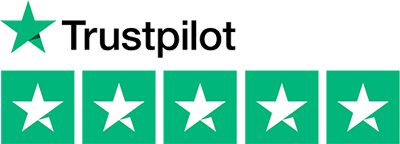A Sole Proprietorship is the most popular business structure in the U.S., with nearly three out of four businesses operating as one. But if you’re running a Sole Proprietorship or thinking about starting a business that will operate as one, it’s important that you’re aware of some significant disadvantages to this business model.
Let’s start by reviewing the basics of Sole Proprietorships, and then I’ll outline 11 disadvantages that might make you reconsider choosing that entity type for your company.
How a Sole Proprietorship Operates
A Sole Proprietorship is a simple business structure in which one person, or a married couple, acts as the sole owner and operator. Unlike a Limited Liability Company (LLC) or C Corporation, a Sole Proprietorship is not a formal business entity because it’s not registered with the state. If you start a business without filing business registration paperwork, your state will automatically consider your business to be a Sole Proprietorship.
Basically, you can just set up shop and start working, although depending on the type of services you provide you have you might need business licenses or permits. Below is a sampling of licenses and permits needed for certain businesses:
- Bakery License
- Day Care License
- Food and Beverage License
- Health Club and Spa License
- Landscaping License
- Lodging Establishment License
- Massage Therapist License
- Nursery Plant Dealer License
- Prepared Food and Beverage Tax
- Rental Property Tax
- Sidewalk Café Permit
- Tattoo Parlor and Body Artist License
- Vehicle Repair and Service License
- Weapons, Guns, and Ammo License
Business licenses and permits are issued by federal, state, county, and city governments. The type of licenses you might need for your business depends on where you live and the type of services you provide.
Why Opting to Use a Sole Proprietorship Might Not Be Best For Your Business
As a sole proprietor, there’s no legal or financial separation between you and your business. You’re personally liable for all business expenses and debts, and if a lawsuit ensues it will be filed directly against you, potentially putting your personal assets at risk. Because a Sole Proprietorship is unincorporated, it is not taxed separately from its owner. You’ll report income or loss on the Schedule C form of your personal tax return. You’ll also need to pay self-employment taxes, which you’ll read more about a bit later in this article.
Many entrepreneurs conduct business as sole proprietors because it is quick and easy to get up and running, often requiring little start-up money. As a sole proprietor, you have total control over your business, tax reporting is relatively easy because all income and losses flow through to the owner’s tax returns, and the business structure requires few corporate formalities. You cannot, however, discount the disadvantages of choosing a Sole Proprietorship for your business. Let’s have a look.
1. Unlimited Personal Liability
Perhaps the biggest negative of choosing a Sole Proprietorship is the lack of legal distinction between the business and its owner. As mentioned earlier, as the owner of a Sole Proprietorship you are the business, with no separation between business assets and your personal assets. That means if you incur business debt, such as a bank loan or a big bill from a vendor, you’re personally responsible for paying it. And if there’s a claim or lawsuit brought against your business, you’re responsible for that, as well. When someone sues a corporation or an LLC, the company’s business assets are at risk. With a Sole Proprietorship, however, both business and personal assets can be on the line because there’s no legal distinction between the two. If business funds are not sufficient to settle a lawsuit, your personal assets – including your bank accounts, vehicles, and your home – can be in jeopardy.
Lawsuits are filed by various parties, including:
- Disgruntled Customers
- Employees claiming wrongful termination, employment discrimination, personal injury, workplace or sexual harassment, defamation, privacy violations, or other legal action
- Landlords
- Suppliers or Vendors with whom you have conflicts over purchased goods
You can limit your risk by buying business insurance to protect you if you’re sued, but it may only cover certain situations, such as a personal injury suit if someone falls and is injured on your property. If a vendor files an action to collect money you owe, your insurance may not cover it or your policy may not provide enough money to pay for the damages. And while insurance can help cover lost revenue or costs incurred by your business, it does not remove responsibility from you – the owner – for legal and financial claims against the business. You can only achieve that with a more formal business entity, such as an LLC or corporation.
2. Tax Concerns
While the relative ease of how a sole proprietor pays taxes is often held up as an advantage, there are some tax-related disadvantages that pertain to Sole Proprietorships.
As mentioned previously, a Sole Proprietorship is subject to pass-through taxation, which means the owner reports business income or loss on their personal tax return. Because there is no legal distinction between the two, the business is not taxed separately from its owner. You’ll simply complete a Schedule C, which is a separate form for your business taxes, and file it annually along with your personal income tax form, Form 1040.
While that’s an easy filing system, consider that any net income from your business increases your personal taxable income, which could put you into a higher tax bracket. Alternatively, any business losses would decrease the amount of personal income on which you’d pay taxes.
Another consideration is that you’ll need to pay self-employment taxes, using a Schedule SE. While an employer pays half of an employee’s Social Security and Medicare taxes and withholds the other half from the employee’s paycheck, someone who is self-employed is responsible for paying the full amount of both taxes. In 2024, the self-employment tax rate is 15.3 percent of net earnings (gross income minus business expenses).
Some IRS forms you may be required to file as a sole proprietor are listed below:
- 1040, U.S. Individual Income Tax Return
- 1040-SR, U.S. Individual Income Tax Return for Seniors
- Schedule C (Form 1040 or 1040-SR), Profit of Loss from Business
- Schedule SE (Form 1040 or 1040-SR) Self-Employment Tax
- 1040-ES, Estimated Tax for Individuals
- 941, Employer’s Quarterly Federal Tax Return
- 944, Employer’s Annual Federal Tax Return
- W-2, Wage and Tax Statement
- W-3, Transmittal of Wage and Tax Statements
- 940, Employer’s Annual Federal Unemployment (FUTA) Tax Return
Figuring out IRS rules regarding your taxes can be difficult, and not adhering to the agency’s guidelines could result in penalties. It’s often advisable for sole proprietors to seek help at tax time. You can find a complete list and explanation of tax forms you may be required to file on the IRS’s official website, https://www.irs.gov/businesses/small-businesses-self-employed/sole-proprietorships.
3. Difficulty in Raising Capital
While a C Corporation can raise capital to cover startup costs or other expenses by offering ownership in the business in exchange for money, a Sole Proprietorship has no shareholders and cannot sell shares without changing its business structure. That means that lacking help from family, friends, or other sources, the owner of a Sole Proprietorship will have to come up with their own capital to fund the business startup, expansion and other expenses.
You could apply for a business loan, but many lenders view sole proprietors as a risk because they may not have regular, established income; significant money saved; or insurance to protect against lawsuits. If you secure a personal loan, you’ll have to use personal assets as collateral, meaning your assets can be at risk if you’re unable to pay back the loan.
4. Limited Growth Opportunities
The very definition of a Sole Proprietorship – a business in which one person owns and runs the company – limits its growth opportunities. Without changing to another business structure, your business will remain a business of one.
You can hire employees, but that means you’ll need to obtain an employer identification number (EIN) instead of using your social security number for tax identification and handle other paperwork necessary when hiring. Also, attracting employees can be difficult if you’re unable to offer competitive salaries and perks.
Sole proprietors need the following tax accounts and documentation when hiring one or more employees:
- Employer Identification Number (EIN)
- Payroll Tax Registration with State and Local Governments
- Workers’ Compensation Insurance Policy
- Form W-4
- State Tax Withholding Form
- Form I-9 (Employment Eligibility Authorization)
Very few people, including sole proprietors, are adept in every aspect of operating a business, increasing the possibility of mistakes being made that could inhibit the growth and potential of a Sole Proprietorship. And difficulty in raising capital, which as you read is often the case for sole proprietors, can make it hard for an entrepreneur to grow and expand a business.
5. Unable to Add Partners
Because a Sole Proprietorship is an unincorporated business with one owner, there is no room for partners. If you do bring on a partner, your business will cease to be a Sole Proprietorship, operating instead as a General Partnership in which you and the other person share business profits and losses.
Like a Sole Proprietorship, a general partnership doesn’t require filing paperwork or taking any specific action, it’s simply two or more people running a business together without the benefit of a formal business entity. A General Partnership carries many of the same disadvantages as a Sole Proprietorship, and also raises the possibility that one partner could enter into a business agreement against the wishes or without the knowledge of others, creating a situation that is legally binding for all partners.
6. Difficult To Sell the Business
While a corporation and everything it entails can be sold as a whole, only the assets of a Sole Proprietorship can be sold – not the business itself. That limitation, of course, is because the business and the owner are not considered to be separate from one another, and it significantly complicates the sale.
The buyers of those assets can decide what they want or don’t want, and any liabilities, such as outstanding loans or unfinished contracts, remain with the owner. Both tangible assets and intangible assets can be sold.
Examples of tangible business assets:
- Inventory
- Raw Materials
- Furniture
- Machinery
- Real Estate
- Supplies
- Equipment
- Software
Examples of intangible business assets:
- Trademarks or Patents
- Reputation
- Client Lists
- Intellectual Property
- Contracts
- Brand Name
- Business Name
- Licenses and Permits
7. When the Owner Dies, the Business Dies
Because of the lack of legal distinction between a Sole Proprietorship and its owner, the business does not continue after the death of the sole proprietor. In some cases, a business owner can craft an estate plan that enables the company to continue after their death, but most often the business will cease to exist when the owner dies.
8. May Require a DBA
If Sara Smith starts up a dog grooming business and wants to call it Happy Hounds or Sara’s Doggie Spa, she’ll need to file for a DBA, which stands for “doing business as.” Without a DBA, also known as a fictitious business name or trade name, the business must operate under Sara’s full, legal name.
Requirements for obtaining a DBA vary by county and city. Generally, you’ll need to complete some paperwork and pay a filing fee with your county clerk’s office or your state government, depending on where you live, and you may have to place a public notice ad in a local newspaper.
9. There’s No Paycheck
When you work for an employer, you expect to be paid a certain amount at regular intervals. As a sole proprietor, you don’t get a paycheck. The money you take out of the business to cover your personal expenses is called a “draw,” and it’s transferred from your business bank account to a personal account.
I can’t stress enough the importance of sole proprietors keeping careful track of their business expenses and income and taking care to keep their business and personal finances separated.
These steps can help you track expenses and avoid comingling of personal and business funds, a mistake that can make tax filing confusing and invite scrutiny from the IRS and other tax authorities:
- Establish a business bank account, using your DBA (doing business as) name on your business checking account, if applicable
- Apply for a business credit card for company expenses
- Track income and expenses to make sure you can cover business expenses before taking money for personal use
- Use an online accounting software platform such as FreshBooks, Zoho, Wave, or QuickBooks for recording income and losses, monitoring cash flow, and tracking profit and loss
The problem, of course, is if there isn’t money in your business account, there’s nothing to move over to your personal account, making it very difficult to cover your costs of living. Relying on money from your own business is much different than having your employer deposit funds into your checking or savings account every two weeks or month, and something you should consider carefully before choosing a Sole Proprietorship.
10. Perceived Lack of Professionalism
Whether warranted or not, LLCs and corporations often are viewed as more official and professional operations than Sole Proprietorships. Regardless of how hard you work to cultivate professionalism in all your business dealings, you might still face the perception that your business falls below the bar in that area.
11. Greater Risk of Audit
Sole Proprietorships could be at increased risk of an IRS audit if the information on their tax return’s Schedule C (Profit or Loss from Business) raises suspicion.
Below are some red flags that may prompt the IRS to initiate an audit:
- Reported gross income above $100,000 – The more money a business makes, the more scrutiny it may encounter.
- Reporting a lot of cash income – Cash-intensive businesses are more likely to go under the microscope — mainly because it’s relatively easy to hide or underreport income paid in cash versus by check, credit card, ACH, or payment apps.
- Reporting large deductions for a home office – “Expenses for business use of your home” — such as utility costs, internet subscriptions, home maintenance, insurance, and other home office expenses — must be calculated on Form 8829 (Expenses for Business Use of Your Home) and allocated according to the home office’s square footage in relation to the home’s total square footage. A significant deduction may cause the IRS to suspect the Sole Proprietor disproportionately reported costs as business expenses. Alternatively, sole proprietors can use the standard rate of $5 per square foot of space used for business (with a maximum deduction of $1,500). Either way, the home office space must be dedicated for business use only.
- Reporting excessive travel, meals, and entertainment deductions – If these seem high for the type of business, the IRS may zero in and look more closely. In tax year 2023, business meals with clients reverted back to being 50% deductible, and client entertainment expenses (e.g., concert tickets, golf games, etc.) are not deductible at all.
- Claiming that 100% of a vehicle’s use is for business purposes – It’s uncommon for a Sole Proprietorship to use a vehicle exclusively for company purposes. The IRS knows this, so reporting 100% business use of a car, truck, SUV, van, etc., on Form 4562 for claiming a deduction for vehicle depreciation may look questionable to the agency.
- Reporting an R&D credit – Taking a research and development tax credit may flag a return for IRS examination because unscrupulous taxpayers have abused this tax break. Therefore, the IRS watches for bad characters who overinflate wages and expenses when calculating the tax credit or claim ineligible activities (such as modifications to an existing product, post-production research, and customer-funded research) as research and development.
- Showing a large business loss – If a Sole Proprietorship’s tax return claims a substantial loss, the IRS may become wary — especially if suspiciously large deductions contributed to that loss.
Naturally, some Sole Proprietorships generate more income, incur more business expenses, and use their vehicle for company purposes more than others. So, even honest, conscientious business owners face audits sometimes. That’s why it’s immensely important to keep business and personal finances separate (i.e., individual bank accounts, credit accounts, etc.), maintain accurate and thorough records of all income and expenses, and carefully review tax returns before submitting them to the IRS. Consulting with an accountant or other professional tax expert can help ensure you report and calculate your deductions correctly.
Making an Informed Decision
There are many factors to consider when deciding what entity or structure is best for your business. Choosing the entity that’s best for you depends on your situation, your company’s potential for growth, how long you plan to operate the business, and other circumstances.
If you’re not sure if a Sole Proprietorship is right for your business or are considering changing your existing status to another type of business structure, I’d urge you to consider your options carefully and seek the advice of trustworthy legal and tax professionals.





